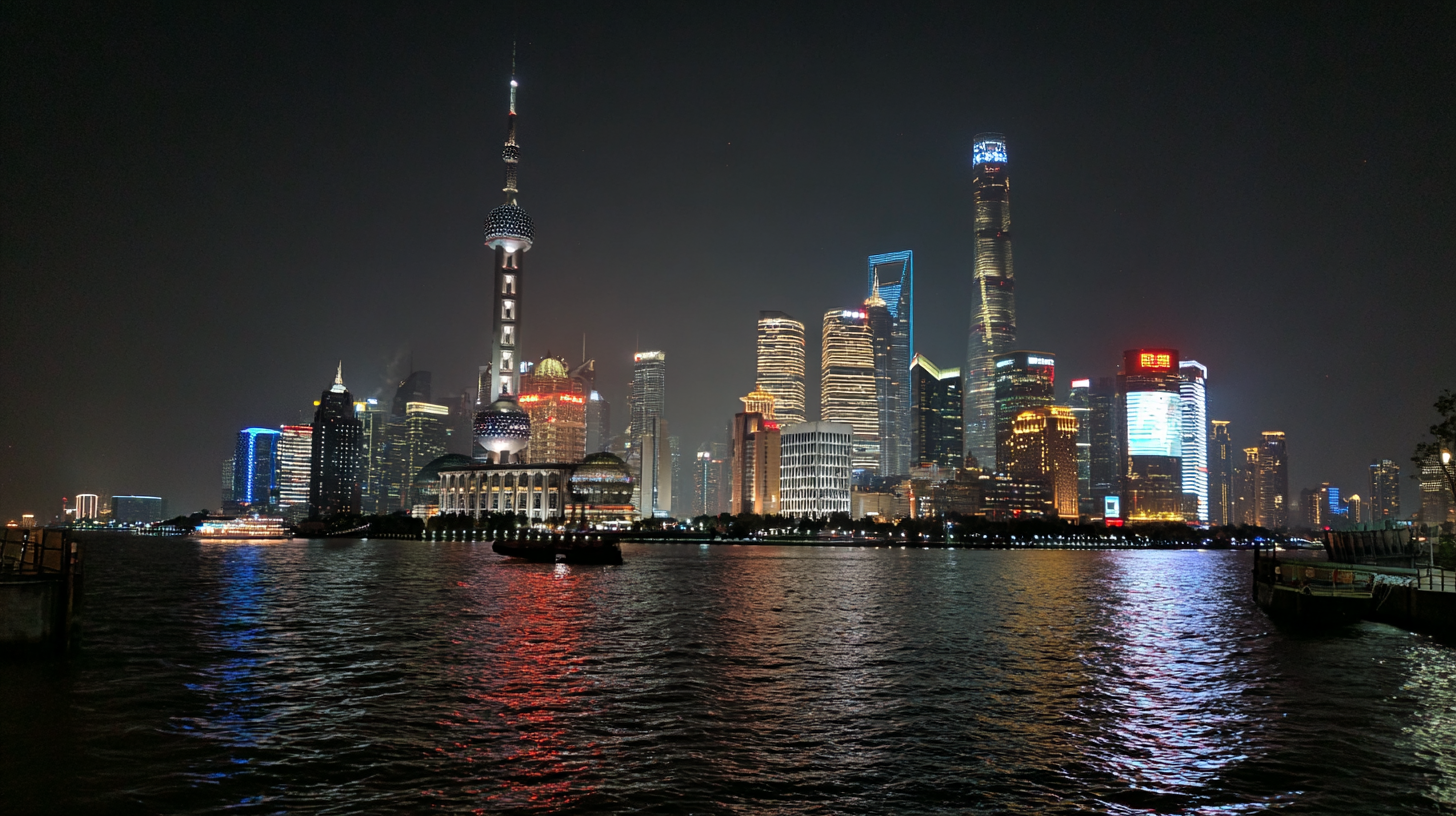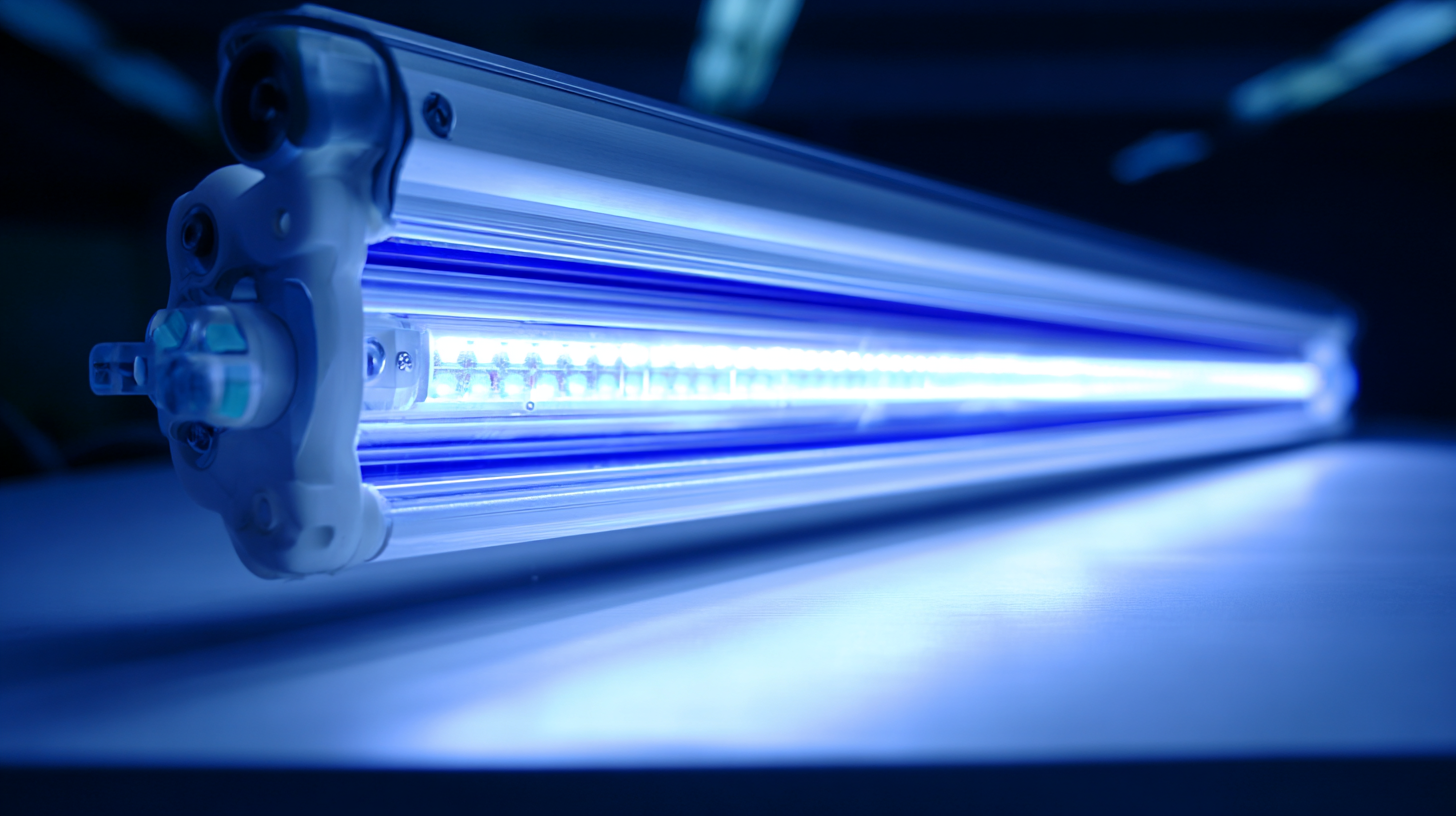The Ultimate Checklist for Sourcing the Best LED Products Worldwide
As global demand for energy-efficient lighting continues to surge, the LED products market has become a focal point for both innovation and sustainability. According to a recent report by Allied Market Research, the global LED market is projected to reach $146.57 billion by 2025, growing at a compound annual growth rate (CAGR) of 13.3% from 2018 to 2025. This rapid growth underscores the importance of sourcing high-quality LED products that not only meet performance standards but also comply with evolving regulations. However, businesses often face myriad challenges when sourcing these products internationally, including issues related to quality assurance, supplier reliability, and compliance with environmental standards. As such, having a comprehensive checklist for sourcing the best LED products worldwide is essential for navigating these complexities and ensuring successful procurement strategies.

Identifying Key Specifications for Quality LED Products in 2023
When sourcing high-quality LED products in 2023, it's crucial to focus on several key specifications that define their performance and longevity. First and foremost, look for luminous efficacy, which indicates how much light is produced per watt of energy consumed. The higher the efficacy, the more energy-efficient the LED will be, resulting in lower electricity costs. Additionally, pay attention to the color rendering index (CRI); a CRI closer to 100 means colors will appear more vibrant and true to life, which is especially important for applications in retail and art galleries.

Another essential specification is the LED's operational lifespan, typically measured in hours. A longer lifespan translates to reduced replacement and maintenance costs over time. Importantly, check for certifications such as Energy Star or LM-80, which offer assurance regarding the product's performance and reliability. Additionally, consider the manufacturer's warranty, as a robust warranty reflects confidence in the product's quality and durability. By focusing on these specifications, you'll be better equipped to select the best LED products for your needs while ensuring efficiency and performance.
Understanding Global Supply Chains: Sourcing Strategies for LED Manufacturers
In today's rapidly evolving market, understanding global supply chains is crucial for LED manufacturers looking to source the best products. As government policies increasingly reshape supply chain dynamics, companies must adapt their strategies to navigate complex trade regulations, environmental standards, and economic incentives. This involves a detailed and systematic approach to managing supplier relationships, ensuring that all stakeholders align with current compliance requirements while maximizing efficiency.
In light of recent disruptions, such as those caused by the COVID-19 pandemic, businesses must evaluate their supply chain resilience and diversify their sourcing strategies to mitigate risks. With a focus on key sectors, including consumer electronics and renewable energy, manufacturers are encouraged to explore various regions, including Asia, to discover new opportunities and partnerships. By optimizing their sourcing strategies, LED manufacturers can better position themselves in the global market and respond more effectively to changing demands and regulations.
The Ultimate Checklist for Sourcing the Best LED Products Worldwide
| Sourcing Criteria | Description | Importance Level | Region |
|---|---|---|---|
| Quality Standards | Compliance with international quality standards (ISO, IEC) | High | Global |
| Supplier Reliability | Track record of on-time delivery and order fulfillment | High | Asia, Europe |
| Cost Efficiency | Competitive pricing without compromising quality | Medium | North America, Asia |
| Innovation Capability | Ability to produce latest technology and designs | High | Global |
| Production Capacity | Ability to meet large order demands without delays | Medium | Asia, Europe |
| Technical Support | Availability of post-purchase support and guidance | High | Global |
Evaluating Energy Efficiency Standards: The Role of Efficacy in LED Product Selection
When sourcing LED products, understanding energy efficiency standards and the efficacy of these products is crucial. Efficacy, measured in lumens per watt (lm/W), is a key metric influencing both energy consumption and light output. According to the U.S. Department of Energy, today's high-quality LED lights can achieve efficacy ratings of over 100 lm/W, which represents a significant improvement over traditional incandescent bulbs that typically offer only about 15 lm/W. This difference not only enhances energy conservation but also translates into lower electricity bills and reduced carbon emissions over the lifespan of the products.

In addition to efficacy, it’s important for buyers to evaluate products against recognized energy efficiency standards such as ENERGY STAR and the DesignLights Consortium (DLC) criteria. These certifications ensure that the LED products not only meet minimum efficacy benchmarks but also adhere to performance and lifespan expectations. The DLC, for instance, reports that products meeting its standards can save between 30% and 60% more energy compared to non-certified alternatives. This level of energy savings is vital, especially in an era where companies are increasingly held accountable for their environmental impact and energy consumption. Thus, choosing LEDs that excel in efficacy and carry recognized certifications can lead to significant economic and environmental benefits.
Navigating Compliance Regulations: What Sourcing Professionals Need to Know
Navigating compliance regulations is a crucial aspect of sourcing LED products globally. As a sourcing professional, understanding the diverse regulatory landscape can significantly impact product quality, safety, and market entry timelines. Different countries impose unique standards and requirements regarding energy efficiency, environmental impact, and safety certifications. It is essential to familiarize yourself with these regulations to ensure compliance at every stage of the sourcing process.
In addition to knowledge of standards such as the IEC, RoHS, or Energy Star, sourcing professionals must also keep abreast of ongoing changes in regulations. This requires establishing strong relationships with suppliers who are equally committed to compliance. Regular audits and assessments of supplier practices can help ensure adherence to these regulations. By proactively navigating compliance challenges, sourcing professionals can mitigate risks and enhance the sustainability and reputation of their product offerings in the competitive LED market. This strategic approach not only safeguards against potential legal ramifications but also positions companies as responsible entities in the eyes of consumers and stakeholders alike.
Leveraging Market Trends: Insights into Consumer Preferences for LED Products
In recent years, the demand for LED products has surged, driven by changing consumer preferences and a growing focus on sustainability. According to a report by Grand View Research, the global LED market is expected to reach $133.6 billion by 2026, expanding at a CAGR of 13.6%. This growth is largely attributed to consumer awareness regarding energy efficiency and the long lifespan of LED lighting. Today’s consumers are increasingly inclined towards products that not only reduce energy consumption but also offer enhanced lighting quality and integrated smart technologies.
Moreover, a survey conducted by the Consumer Technology Association highlights that 74% of consumers prioritize energy efficiency when selecting lighting solutions. This trend is further supported by the rise of smart home technologies, with the smart LED segment expected to grow remarkably, projected to reach $19.6 billion by 2024. As consumers gravitate towards solutions that provide convenience and control, LED products featuring connectivity and automation are becoming increasingly appealing. Brands must thus align their offerings with these shifting preferences to remain competitive in the expanding global market for LED products.

